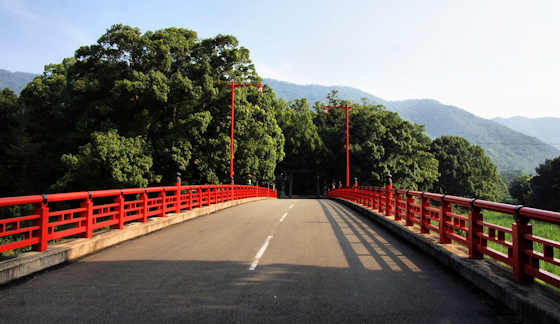For details I refer you to that post. It is worth mentioning that according to the myth he caused Lake Shinji to rise in an attempt to drown his father, and supposedly the water level reached this point, which is quite remarkable considering how much higher this place is than Unochi Shrine.
Showing posts with label engi shiki. Show all posts
Showing posts with label engi shiki. Show all posts
Friday, May 23, 2014
Ushio Shrine
For details I refer you to that post. It is worth mentioning that according to the myth he caused Lake Shinji to rise in an attempt to drown his father, and supposedly the water level reached this point, which is quite remarkable considering how much higher this place is than Unochi Shrine.
Labels:
aragami,
ebisu,
engi shiki,
Hachiman,
inari,
Izumo Fudoki,
izumo33,
Shrine,
unojihiko
Thursday, May 1, 2014
Serida Shrine
This area is between the entrance to Yomi where Izanagi visited Izanami, and Izamani's tomb on top of Mt. Hiba.
Labels:
engi shiki,
hayatamano,
izanami,
Izumo Fudoki,
izumo33,
kanayago,
kanayamabiko,
kotosakano,
Shrine
Saturday, March 15, 2014
Iishi Shrine
What is also unusual about Iishi Shrine is that there are no komainu or shimenawa, in fact no "decoration" at all.
Labels:
amenohohi,
engi shiki,
Izumo Fudoki,
izumo33,
kibitsuhiko,
kuniyuzuri,
Shrine,
takehiratori
Monday, January 20, 2014
Mishiro Shrine
Mishiro Jinja
Labels:
aohatasakusahiko,
engi shiki,
inari,
Izumo Fudoki,
izumo33,
komainu,
Kushinada,
otoshi,
oyamakui,
Shrine,
Susano
Wednesday, January 15, 2014
Yaguchi Shrine
It was early May and so everyone was out preparing the paddies and planting the rice.
Labels:
engi shiki,
Izumo Fudoki,
izumo33,
Shrine,
Susano,
yamata no orochi
Tuesday, October 15, 2013
Sokinoya Shrine
Sokinoya Jinja
Labels:
engi shiki,
isotake,
Izumo,
izumo33,
karakuni,
mikoshi,
sarutahiko,
Shrine,
Susano
Friday, September 20, 2013
Kumu Shrine & Shusai Hachimangu
Labels:
engi shiki,
Hachiman,
inari,
Izumo,
Izumo Fudoki,
izumo33,
Shrine,
Susano
Friday, September 13, 2013
Enya Shrine
The shrine is very old, being listed in the Izumo Fudoki of 720, as well as the Engishiki.
Labels:
aragami,
engi shiki,
inari,
Izumo,
Izumo Fudoki,
izumo33,
komainu,
kotoshironushi,
ojin,
oyamazumi,
Shrine,
tenjin,
yamuyahiko
Monday, April 22, 2013
Ikui Shrine
Ikui Shrine is a small shrine in Katsuura Town between temples 19 and 20 of the Shikoku Pilgrimage.
Ikui is another way of reading Ebisu, and this is the kami enshrined here, rather Kotoshironushi, the official identity of Ebisu since the Meiji Period.
The shrine is listed in the Engi Shiki, a court document from the early tenth Century that, among other things, lists 2,861 shrines across Japan that received annual offerings from the Imperial Court.
This website has details of all the shrines in the Engi Shiki, unfortunately only in Japanese.
Labels:
ebisu,
engi shiki,
henro,
kotoshironushi,
Shrine,
tokushima
Saturday, November 26, 2011
Oasahiko Shrine
Hemp was a very important plant in Japan until Shogun Macarthur outlawed it during the occupation.
Labels:
engi shiki,
hemp,
henro,
imbe,
sarutahiko,
shikoku,
Shrine,
tokushima
Subscribe to:
Posts (Atom)

























































